How to make an artificial Christmas tree look more realistic
6 expert-recommended ways to choose, style, and decorate an artificial tree to make it look realistic
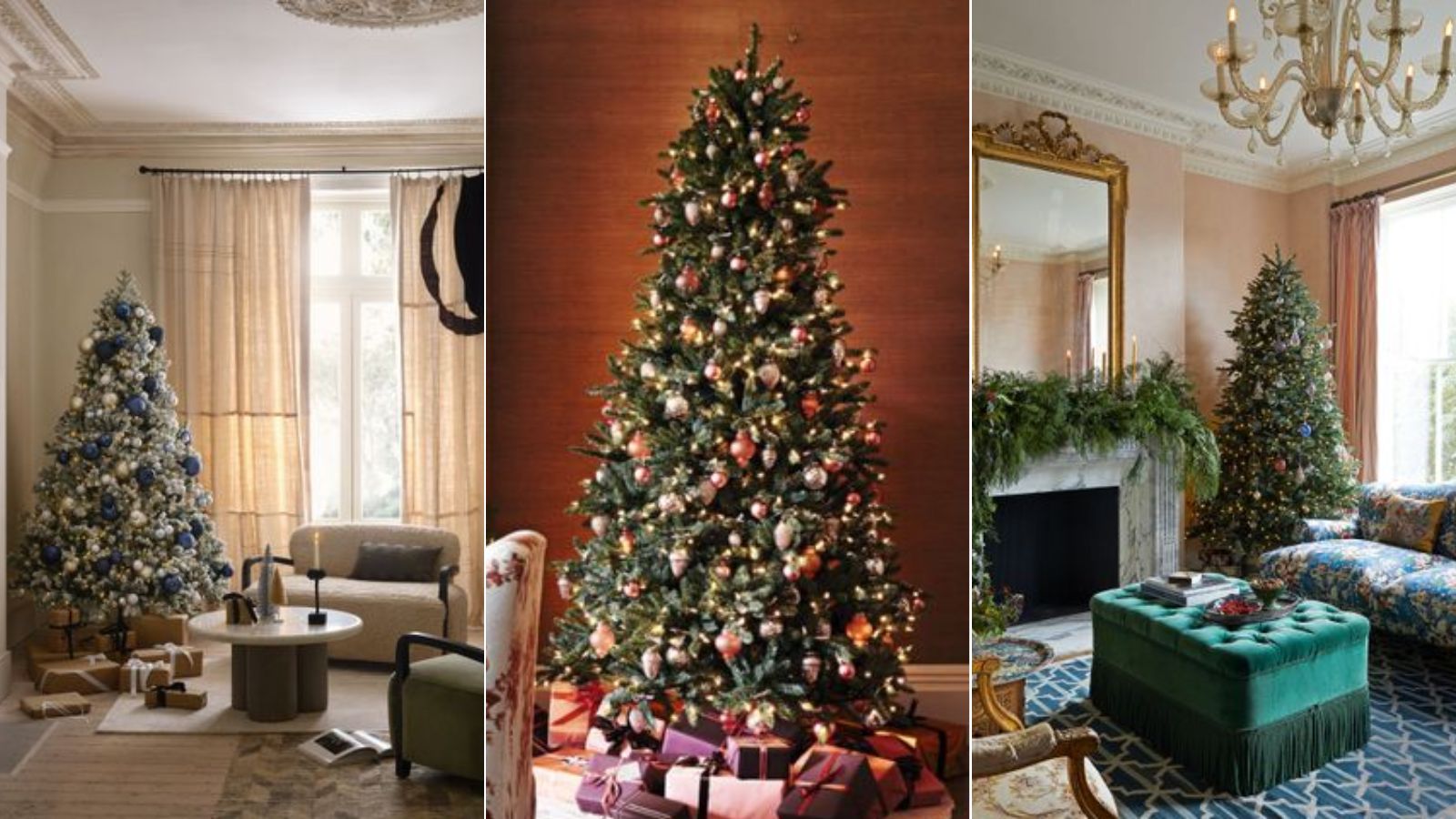

Although an artificial tree can be a great environmentally-friendly and money-saving investment, making decorating your home for Christmas every year simpler, these trees can cheapen the aesthetics of your Christmas display if they are not styled properly.
Making your artificial tree look more realistic can elevate the overall appeal of your home this festive season. Tactical and tasteful decoration of your artificial tree can transform it into a full and natural-looking decoration that can act as the seasonal centerpiece for any space.
From shaping and styling the tree to selecting the right materials, our experts have explained how to make your Christmas tree look better and appear more realistic.
How to make an artificial Christmas tree look more realistic
Ensuring a lifelike appearance for you artificial Christmas tree involves studying the nuances of real Christmas trees and attempting to replicate these with your artificial model.
1. Fluff and shape for lifelike texture
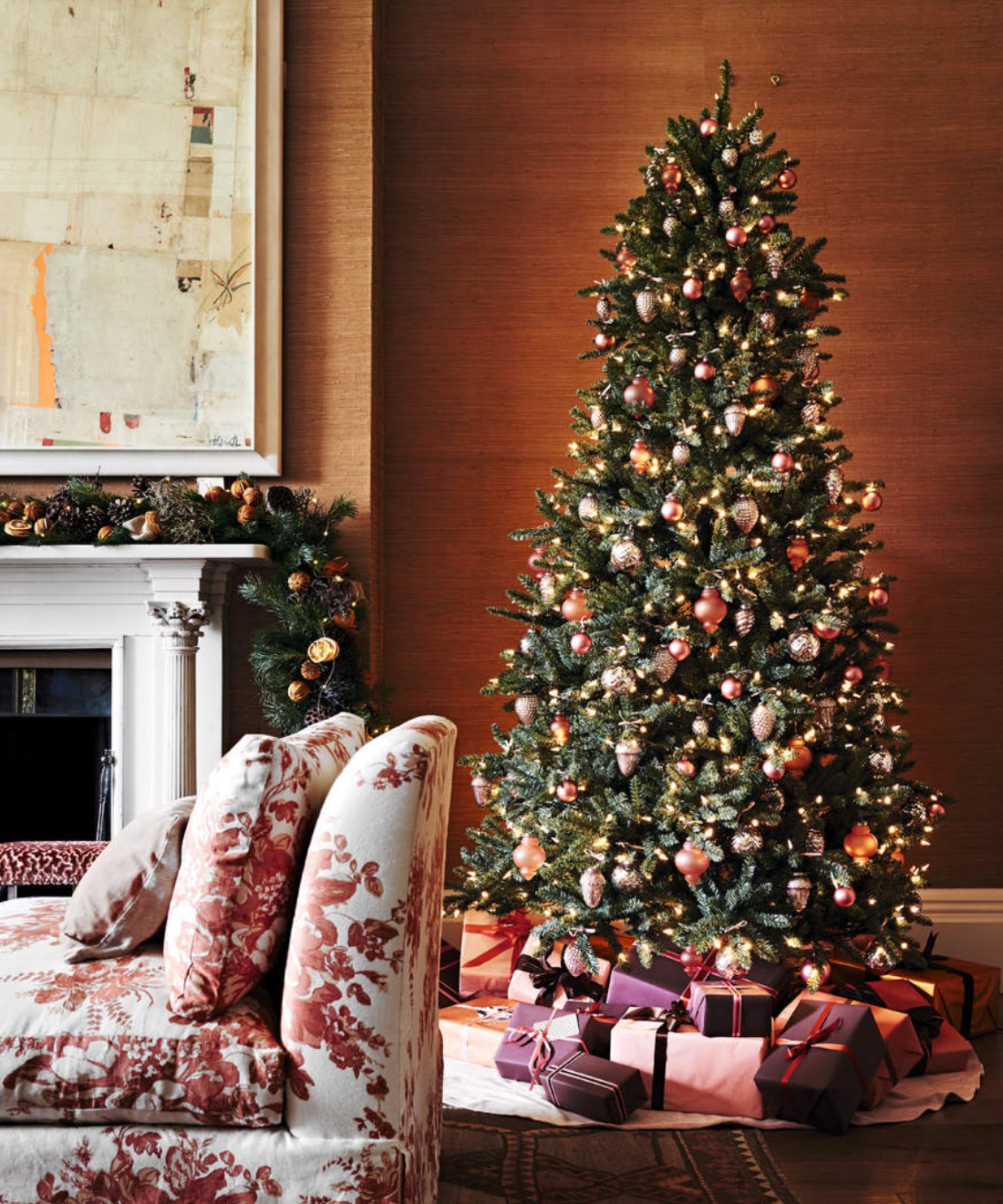
'Achieving a realistic texture in your artificial tree requires proper fluffing and shaping,' says Beth Haven, interior design expert at Businessmole. 'Spend some time gently spreading out the branches, taking note of the asymmetry and natural spacing present in actual trees.
'Add an organic touch by softening the angular lines with a gentle curvature of the branch tips. This meticulous attention to detail makes a big difference in producing a centerpiece for your holiday décor that is both realistic and eye-catching.'
Use a real tree for reference when shaping and fluffing your Christmas tree. The goal is to break the uniformity of the artificial tree and give it a more organic look.
2. Embrace the layering technique for dimension

'Use the layering technique to reduce the sharp look of artificial branches,' recommends Beth Haven.
Start with the lights, creating depth by ensuring they're weaved close to the trunk, not just on the surface to create a more natural, warm glow. Use a combination of small and larger bulbs to make the tree look more full and vibrant. This Christmas tree lighting technique can enhance your artificial tree's realism.
Then, weave in different types of ornaments – varying sizes and textures can make the tree appear fuller and more nuanced.
'Work your way outward with smaller ornaments after starting with larger ones closer to the trunk,' advises Beth Haven. 'This adds a sense of depth and resembles a real tree's natural growth pattern.'
3. Introduce natural elements for authenticity
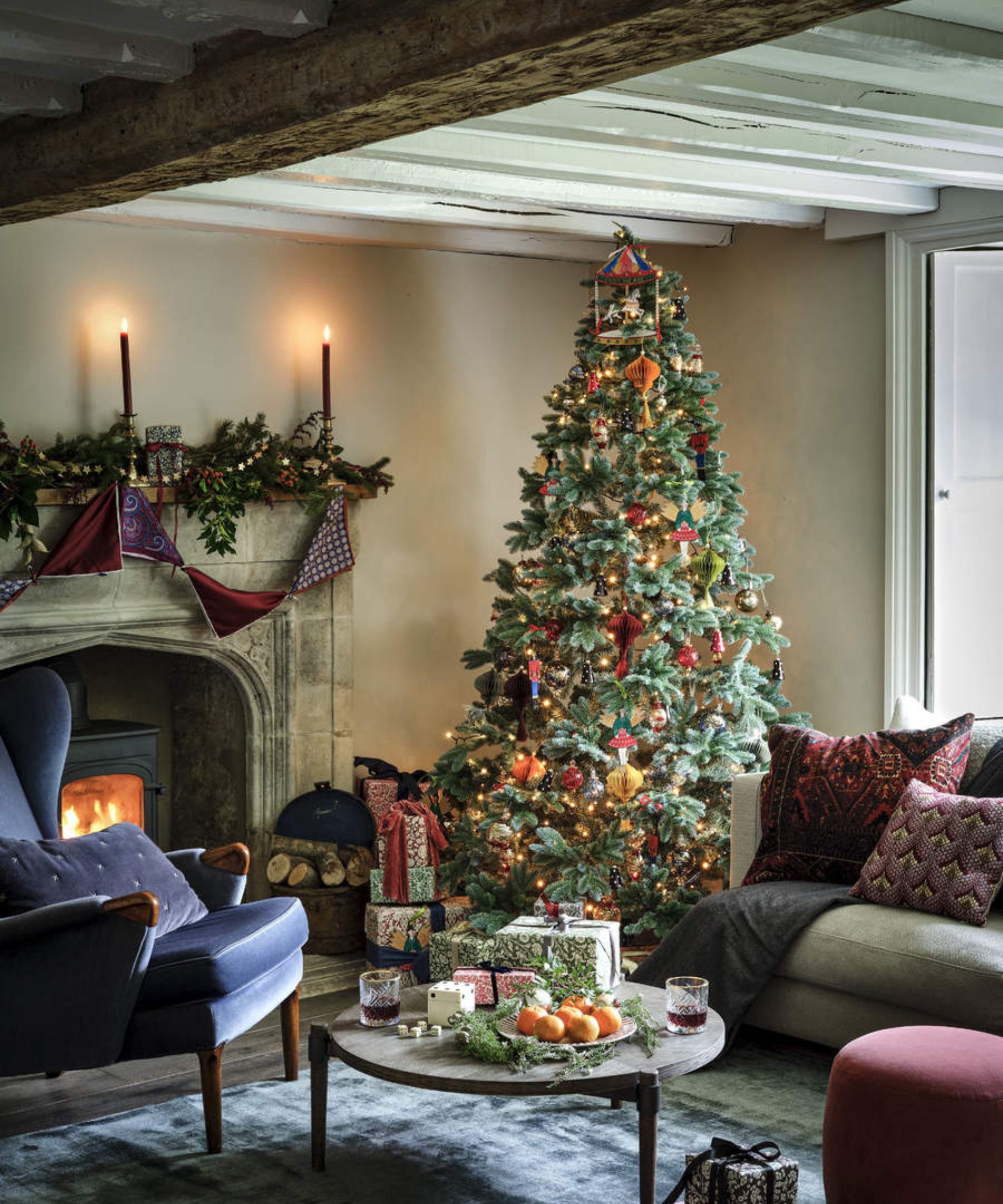
Incorporating natural elements through your Christmas tree decor, such as dried fruit or wooden ornaments, can add realistic pockets to your tree, enhancing its overall appearance.
'To bridge the gap between artificial and real, bring in elements from nature. Pinecones, faux greenery, and even small sprigs of real greenery such as pine or fir can add a touch of authenticity,' says Beth Haven. 'These natural elements break up the uniformity of the artificial branches and create a more cohesive and realistic look.
'Consider scattering pinecones throughout the tree or tucking small clusters of faux greenery into the branches for a woodland-inspired feel.'
Mike Lansing, garden designer and managing editor at Planters Digest adds: 'Wrap an extra strand of fake pine garland around your tree; it will meld into the branches and cover up any bare places that detract from the overall look of your festive tree.'
Not only does adding natural greenery add texture that can make the artificial appearance of the tree less noticeable, but will also offer an authentic scent.
4. Cover the base
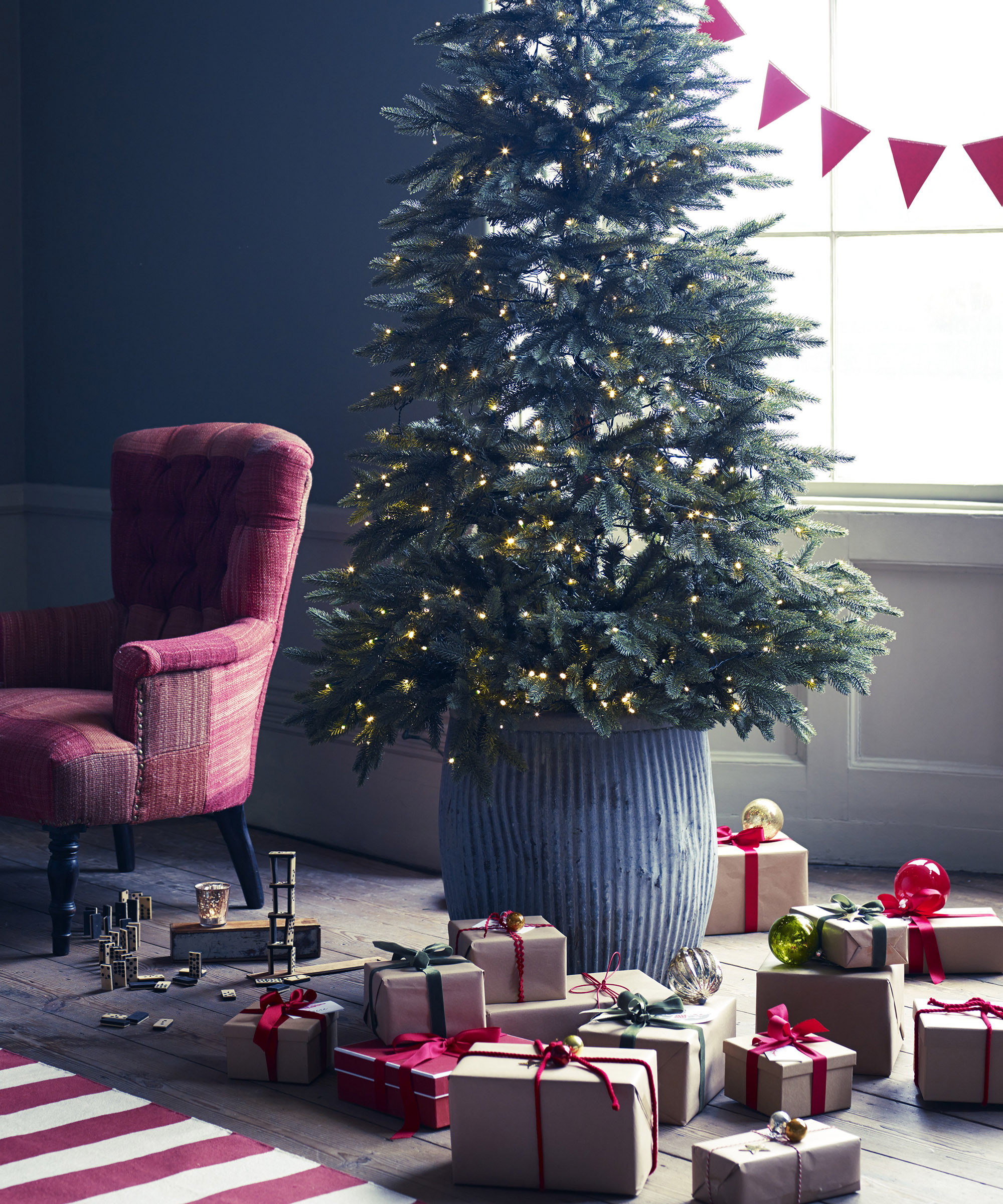
Usually, the main giveaway that a tree is artificial is the base. To disguise the plastic or metal base, there are a range of options, some that mimic a real tree, or simply attractive covers that you can coordinate with the room's decor.
'Since the idea is to make your artificial tree look more realistic, consider covering it with a real wood trunk cover,' recommends Jonathan Faccone, interior designer and founder of Halo Homebuyers.
'I always prefer to use birch or pine bark, as it adds a touch of nature and authenticity to the tree. You can easily find these covers at your local craft store or online.' We recommend this wood texture, natural faux tree skirt decor, from Amazon.
Alternatively, Mohammad Ahmed, interior designer and founder of The Home Guidance Blog recommends, 'Use a high-quality tree skirt or tree collar to cover the base. This not only hides the artificial stand but also adds a touch of luxury.'
We love this hammered metal tree collar, from West Elm to add a touch of warmth and elegance to your artificial tree.
Jonathan Faccone adds, 'I love to surround the base of your tree with a thin layer of faux leaves, pine needles, and small twigs or even small branches. It will help to break up the perfect shape of the artificial tree and add texture. This will make the tree look as if it's growing out of the forest floor.' You can incorporate these natural items to cover the base cover you choose.
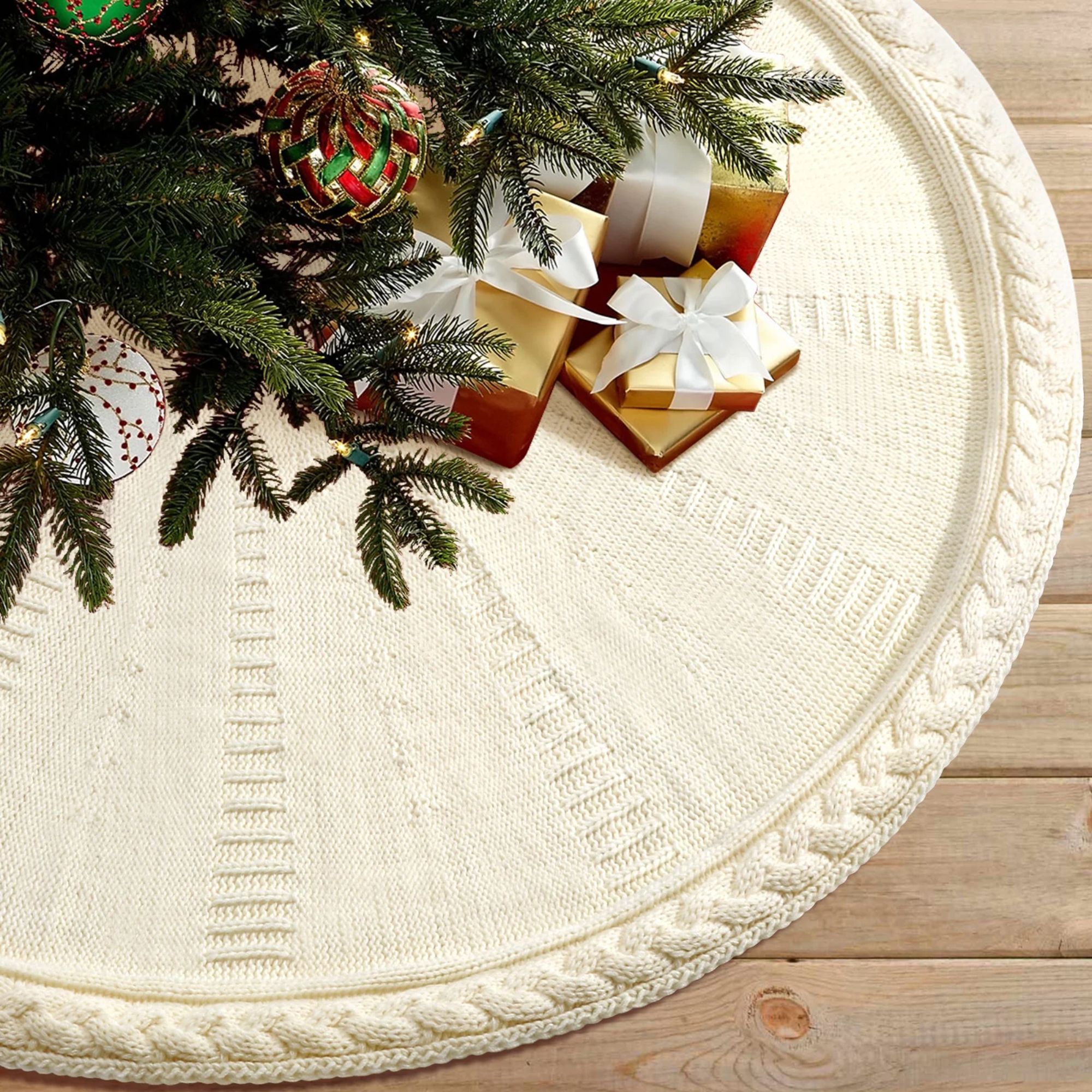



Mohammad Ahmed is an interior designer and home expert. He did his bachelor's degree in interior design at the University of Minnesota in 2013 and since then has worked as an interior designer in various companies, designing functional and beautiful spaces for clients.
5. Play with earthy color palettes
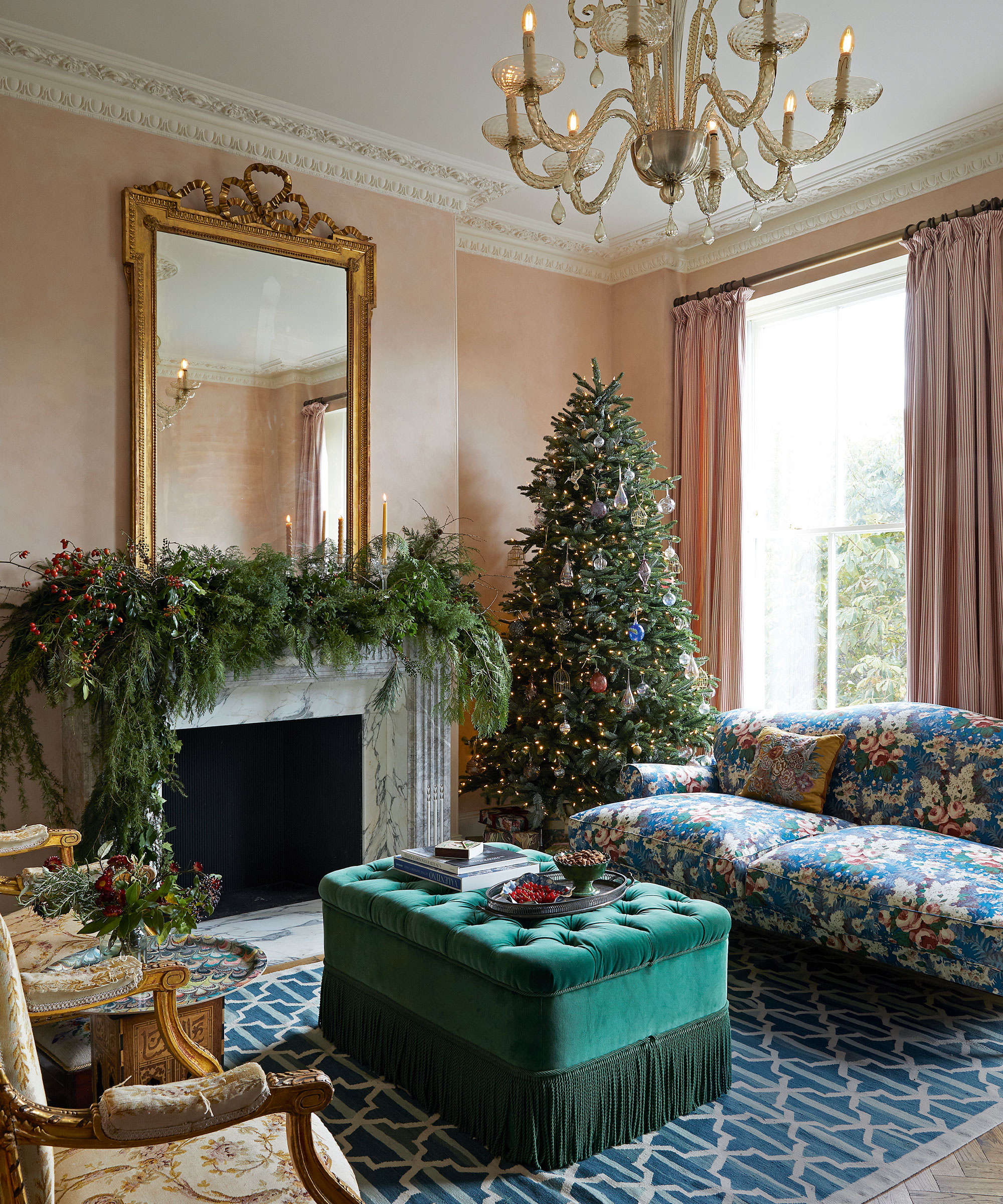
Don't neglect the power of the color and finish of your ornaments. A variety of finishes, including matte, shiny, and glittered can mimic how light plays on a real tree.
'Choosing the right color palette is crucial in achieving a realistic appearance,' says Beth Haven. 'Opt for earthy tones inspired by nature, such as deep greens, rich burgundies, and metallic golds.
'These colors not only complement the greenery but also evoke the warmth and charm of a natural Christmas tree.
'Experiment with a mix of matte and shiny ornaments within the chosen color scheme to add visual interest and mimic the subtle variations found in real evergreens.'
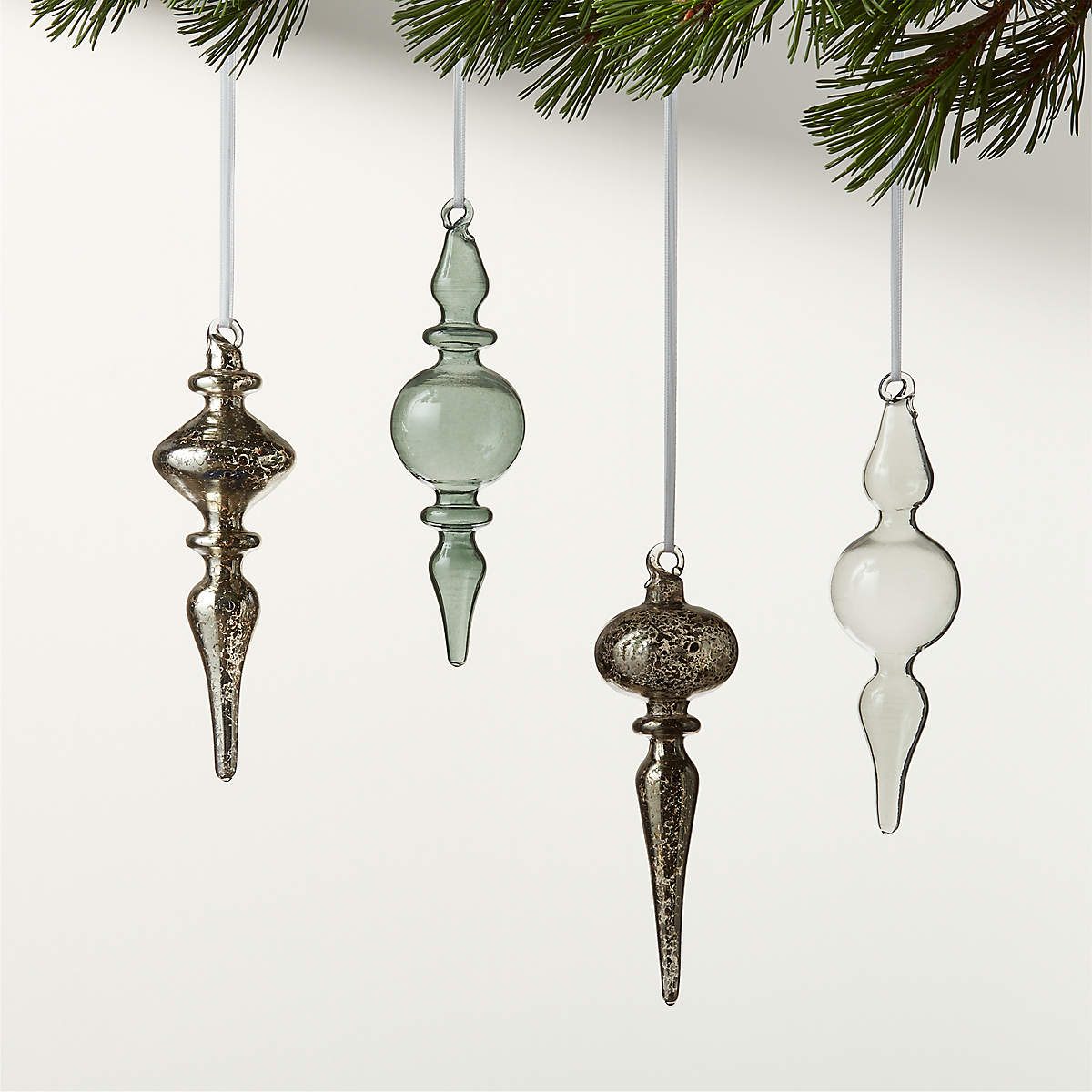
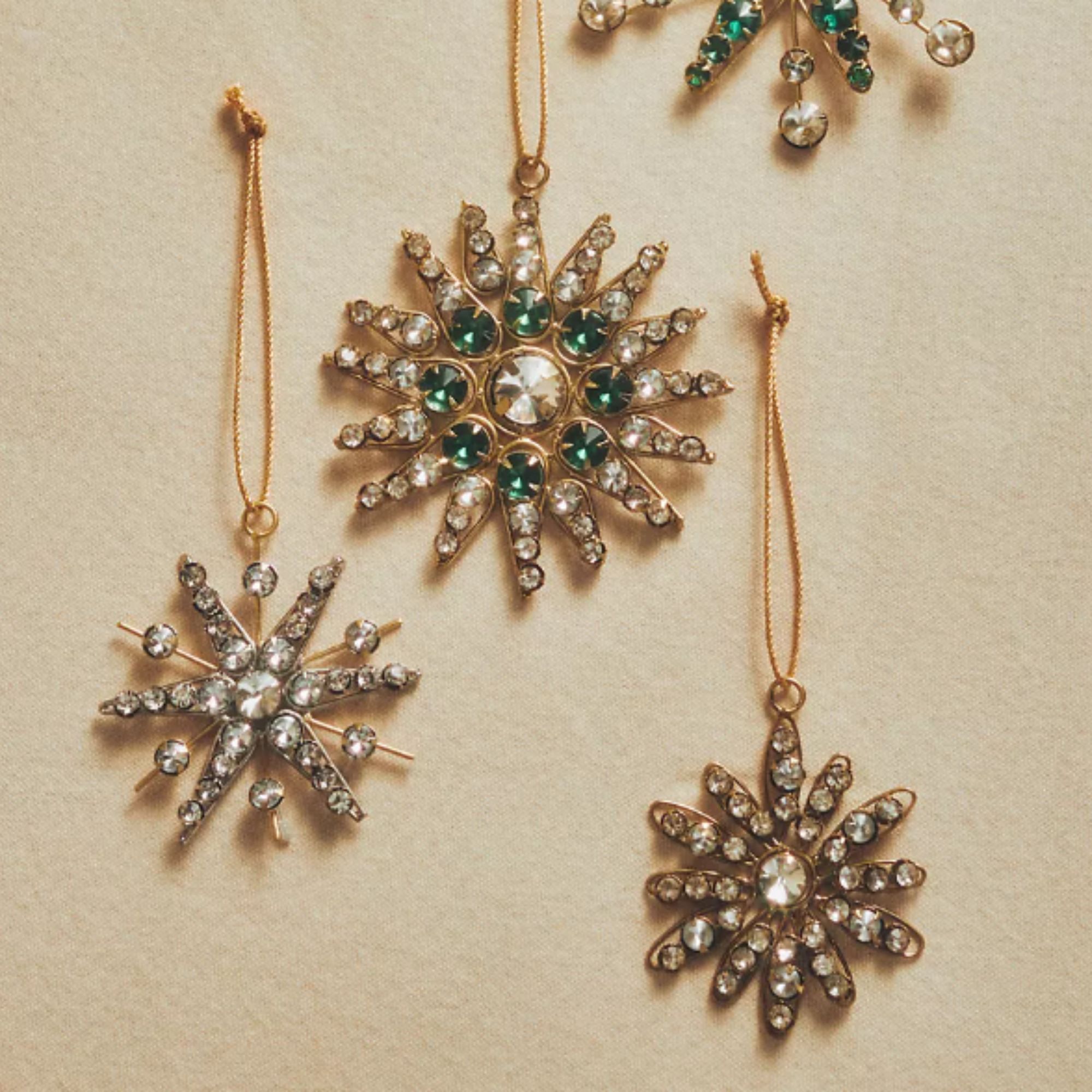
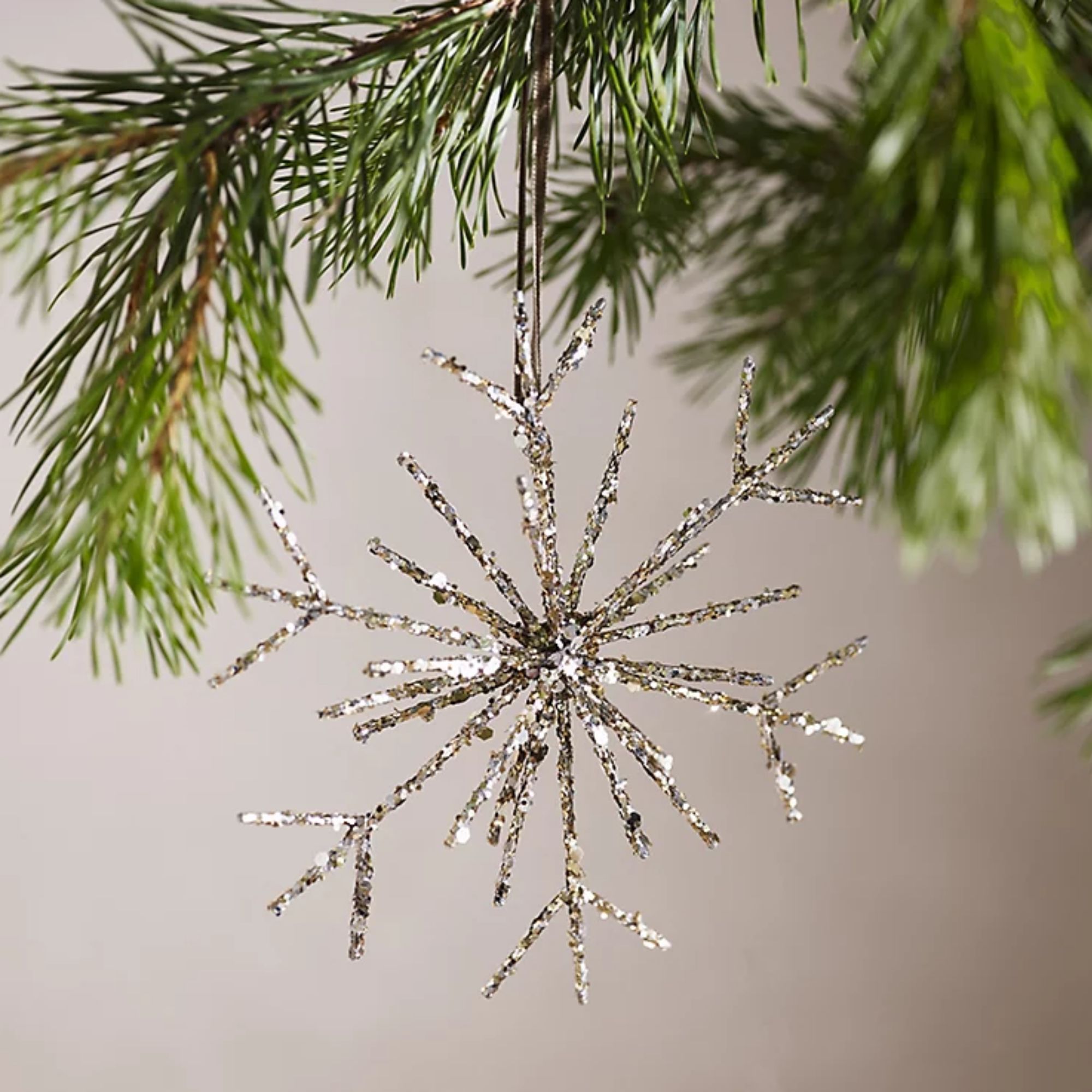
6. Choose the right kind of tree
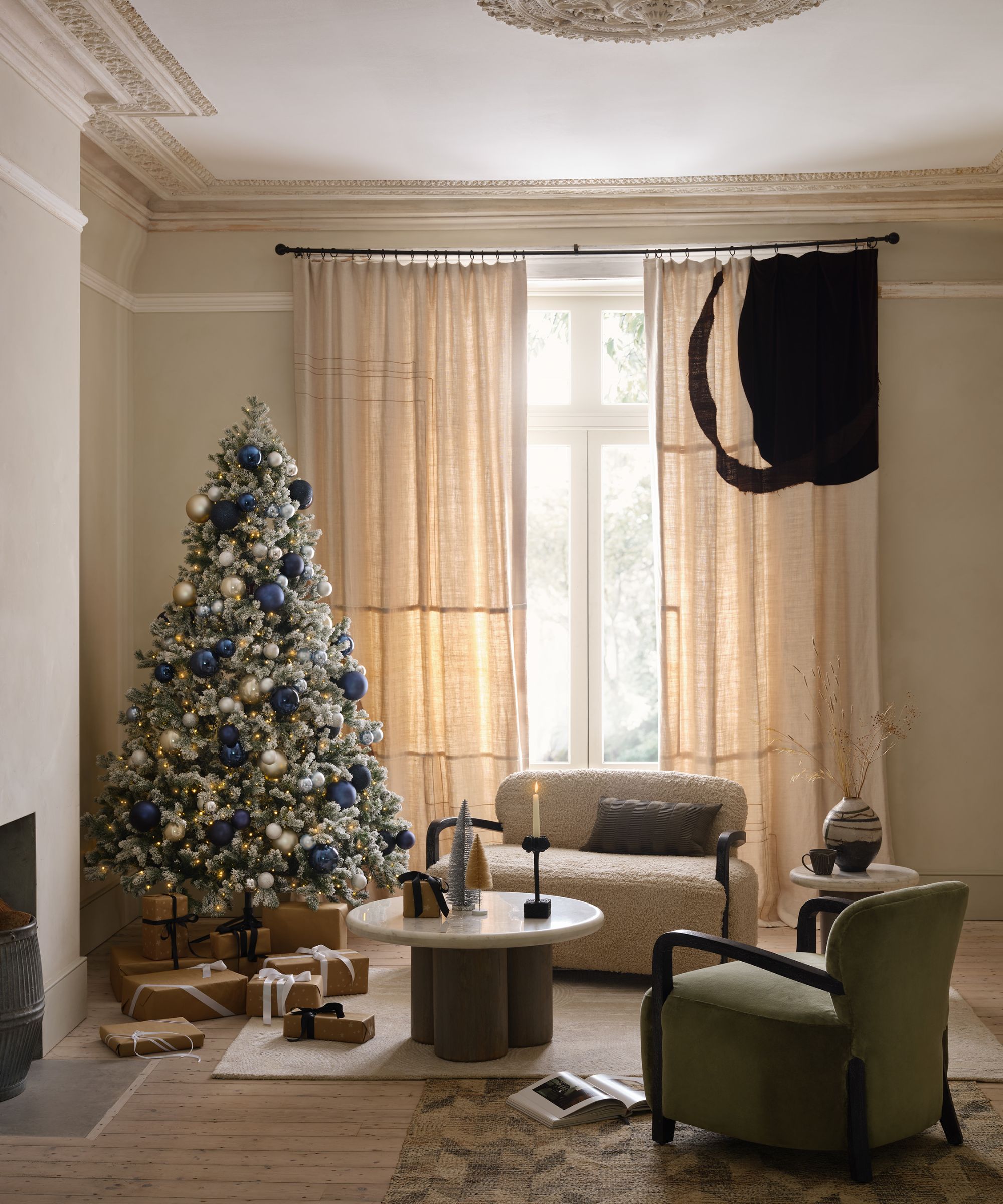
Perhaps the most instrumental factor in making an artificial tree look real is choosing a Christmas tree that appears as natural as possible. To do this there are a few factors to consider.
First and foremost, focus on material used for the branches. Seek out PVC or PE branches with textures and colors closely resembling those of real tree branches. These materials offer flexibility, allowing them to be molded to imitate the natural shape of a tree.
You should also take into account the height and width of the tree, choosing a size that not only looks realistic but also fits seamlessly into your space and looks proportionate within the room.
Lastly, scrutinize the overall shape of the tree. Realistic trees often have irregular or asymmetrical shapes, so opt for one with branches that replicate the organic growth patterns of a natural tree.
You can check out our guide for the best places to buy artificial Christmas trees to find the most realistic models.
FAQs
How do you make an artificial Christmas tree smell like a real one?
'A pine tree can be identified by more than simply its appearance. You can
tell it's authentic when you catch a hint of the woodsy scent,' says Mike Lansing, garden designer and managing editor at Planters Digest.
'To make an artificial tree smell more real, place ornaments made of fragrant sticks in a discrete location on the rear of the tree.
'Alternatively, a more natural option is to use pine needle essential oils or burn a pine-scented candle in the space.' You can find pine needle essential oil at Amazon.
You can also add natural sprigs of pine or fir to the tree which will emit a subtle scent.
How can you soften the appearnce of artificial tree branches?
'For particularly stiff or angular branches, you can use soft tulle or organza fabric tucked in between branches,' advises Mohammad Ahmed, founder of The Home Guidance blog. 'This can help soften the overall look and add a whimsical quality.'
'Don't skimp on the decorations if you want your artificial Christmas tree to look as natural as possible. Purchasing high-quality decorations not only improves the appearance overall but also helps to create the impression of a genuine tree that has been meticulously decorated.'
Invest in high-quality decorations that mimic natural textures and hues, prioritizing those that mimic real materials and adhere to a consistent theme that complements your overall interior decor.
Finally, remember to keep your artificial tree looking fresh and realistic by regularly dusting it, since dust is a clear indicator that your tree is fake (a microfiber cloth will do the job).
Sign up to the Homes & Gardens newsletter
Design expertise in your inbox – from inspiring decorating ideas and beautiful celebrity homes to practical gardening advice and shopping round-ups.

Lola Houlton is a news writer for Homes & Gardens. She has been writing content for Future PLC for the past six years, in particular Homes & Gardens, Real Homes and GardeningEtc. She writes on a broad range of subjects, including practical household advice, recipe articles, and product reviews, working closely with experts in their fields to cover everything from heating to home organization through to house plants. Lola is a graduate, who completed her degree in Psychology at the University of Sussex. She has also spent some time working at the BBC.
-
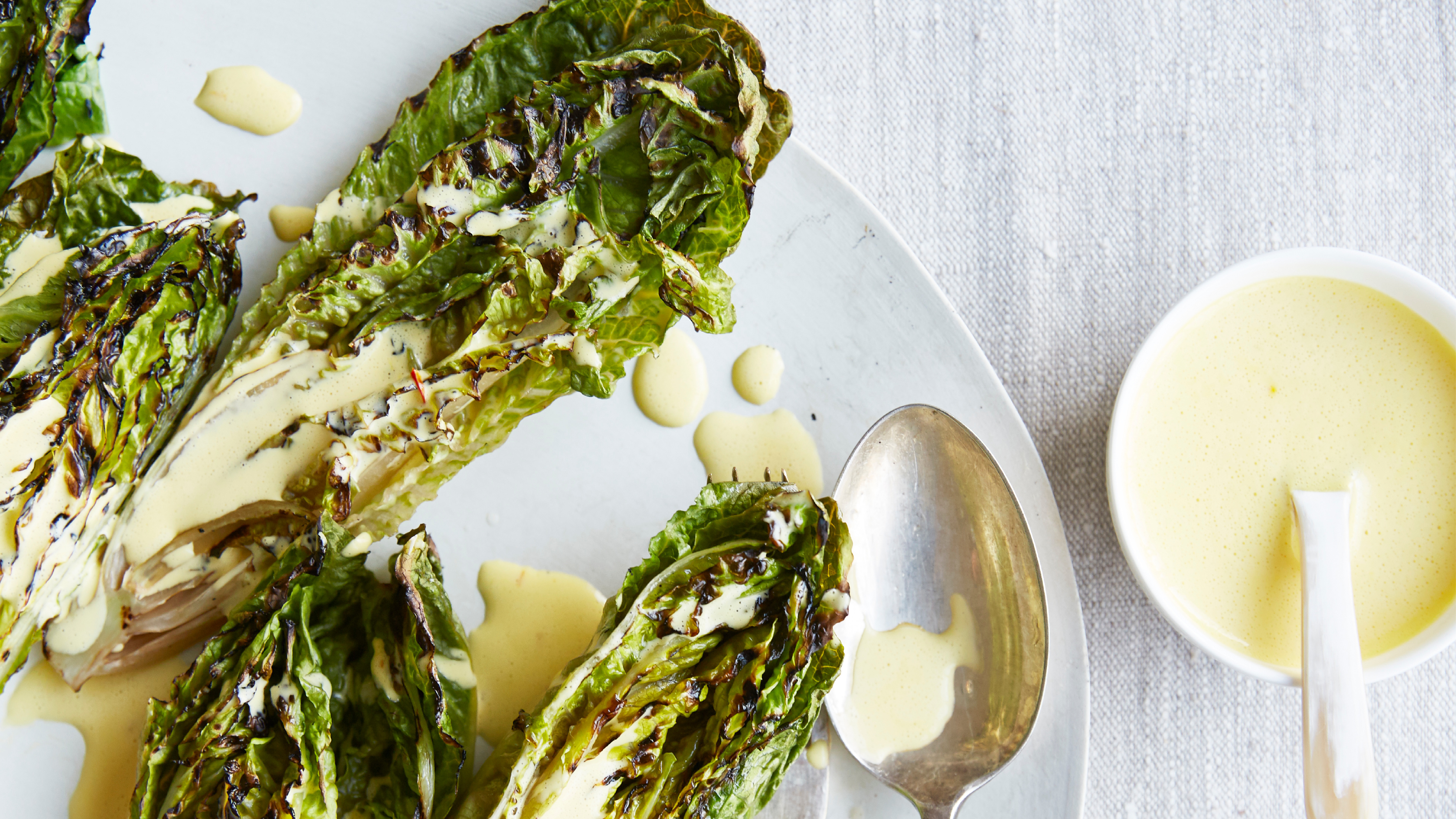 Charred little gem with saffron dressing
Charred little gem with saffron dressingThis recipe with charred little gem is both easy to make and sure to impress guests. It's the perfect side for fresh spring menus
By Alice Hart
-
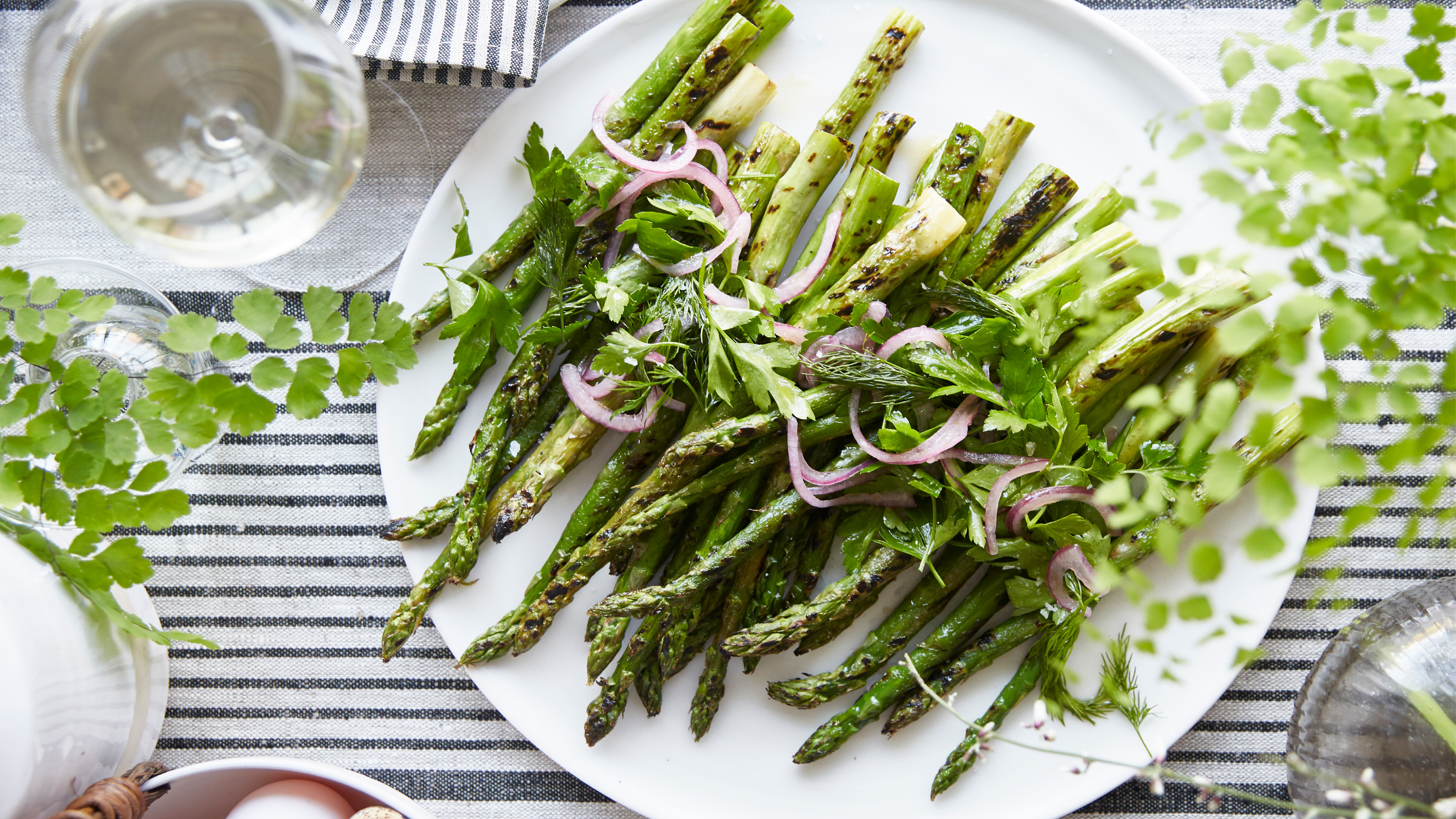 Grilled asparagus with herb and pickled red onion
Grilled asparagus with herb and pickled red onionThis grilled asparagus couldn't be easier, and it's a wonderful way to get the best flavor from our favorite spring veg. It's perfect alongside fish or lamb
By Alice Hart